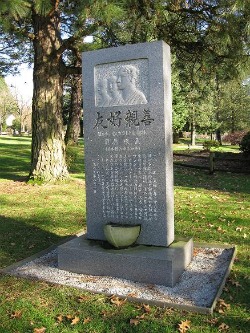In October 1832, a fully loaded cargo ship with a crew of 14 set sail for Edo, Japan. (present day Tokyo) Shortly after leaving port, it was caught in a horrific storm. Battered by high winds and surging waves, the ship was driven far from its course and ended up drifting aimlessly in an open sea without a rudder.
The ship, called the Hojun Maru, drifted on the Kuroshio Current for 14 months! With a cargo hold full of rice and water barrels replenished by subsequent storms, these castaways were better provisioned than most. Unfortunately, by the time they reached land, illness (scurvy, perhaps?) had carried off all but three of the original crew members.
The Hojun Maru finally ran aground in the winter of 1834 near Cape Flattery, at the northwest tip of what is now Washington State. The only survivors of that ill-fated voyage were Iwakichi (age 28), Kyukichi (age 15), and Otokichi (age 14).
After washing ashore, the three “Kichi’s” were plucked from the beach by Makah hunters and then lived for a time among the native tribes who inhabited that region. A few months later, they were picked up by a Hudson’s Bay Company brig called the Llama and taken to Fort Vancouver where they lived until November 15, 1834.
Chief Factor John McLoughlin then arranged for them to be transported to England for eventual repatriation back to Japan. How sad to learn that, after all their tribulations, none of the three ever made it all the way back home. For the complete story of the Hojun Maru survivors, please check out this article posted on the History Link website.
To honor these three mariners and “commemorate the arrival of the first Japanese on the North American continent,” a stone monument was erected in August 1989. The monument is located at the Fort Vancouver National Historic Site. Visitors will find it tucked away underneath a pine tree just a few feet west of the Visitors Center. For directions and a map, please check the Fort Van website.

